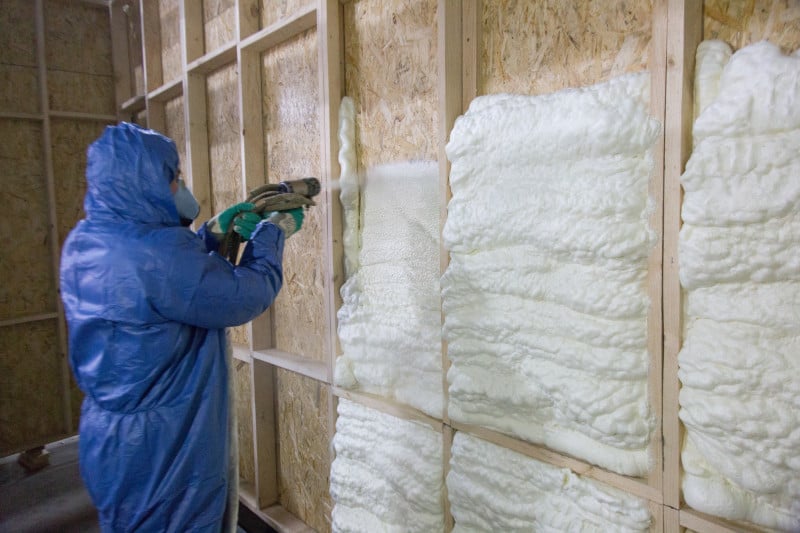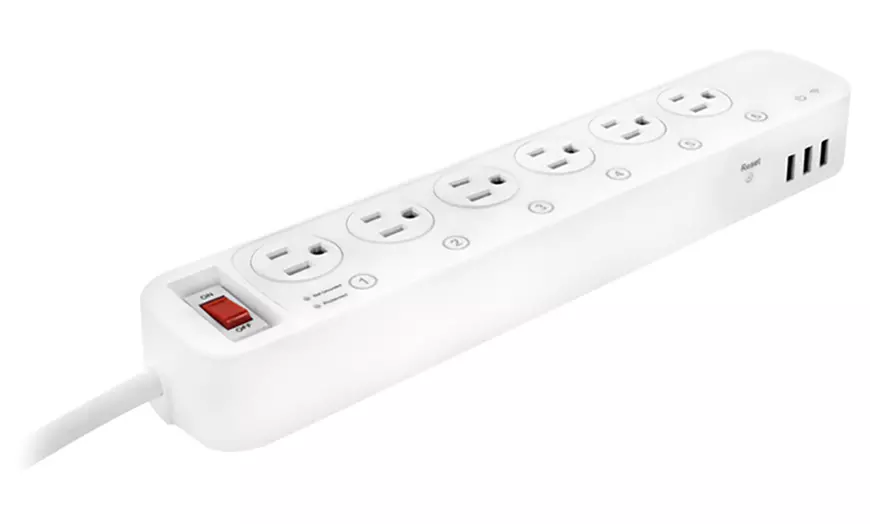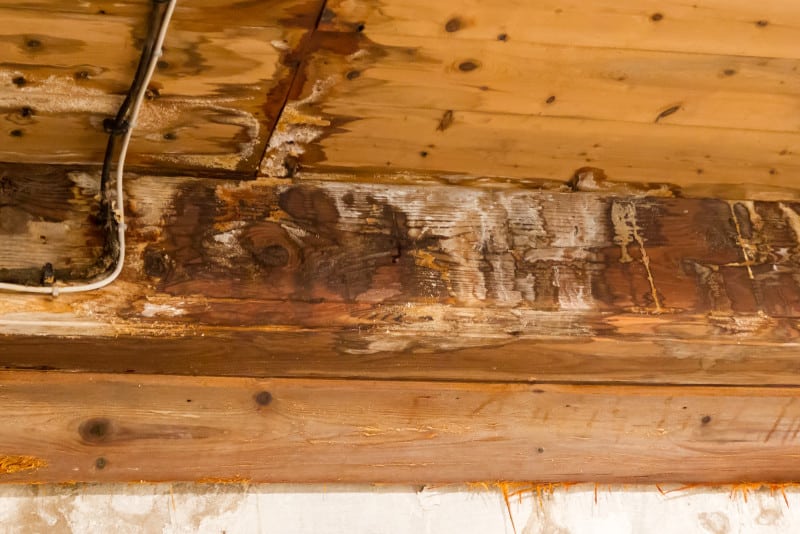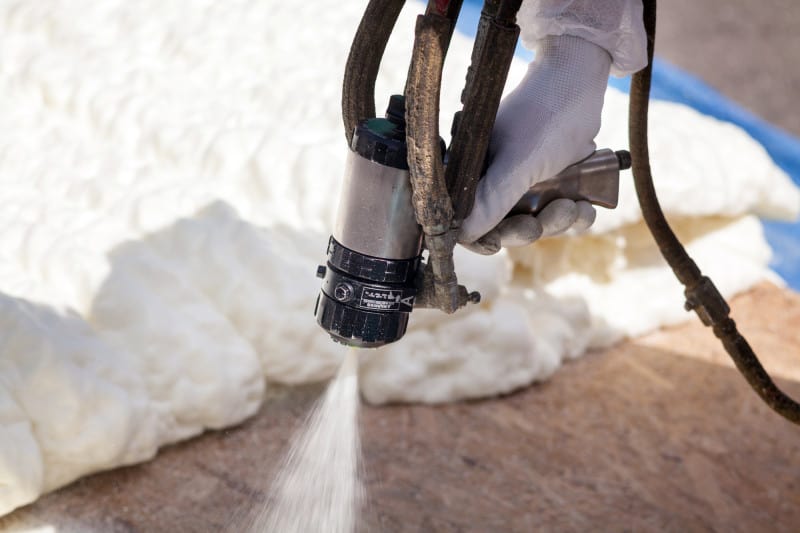Spray foam insulation has been gaining popularity as a cost-effective and efficient way to insulate homes and buildings.
However, with the increasing focus on sustainability, it is important to understand the concept of reusability when it comes to spray foam.
With this in mind, I wondered, is spray foam reusable?
Spray foam insulation is not typically reusable once it has been applied and cured. The foam expands to fill cavities and hardens into a solid form, creating a seal that blocks air and moisture. Once this process has occurred, the foam cannot be easily removed and re-applied elsewhere.
Let’s dig a little deeper to understand why…
Understanding the Concept of Reusability in Spray Foam
You may be wondering what the concept of reusability means in the context of spray foam insulation and how it can impact your project.
Reusability refers to the ability of spray foam insulation to be removed and reused in a different location or to reapply additional foam layers.
The idea of reusability has become increasingly popular in the insulation industry as technological advancements have allowed for more efficient and eco-friendly solutions.
One of the benefits of spray foam insulation’s reusability is its economic feasibility.
Being able to reuse the foam in different locations reduces the cost of purchasing new insulation materials.
Using spray foam insulation can help lower energy bills by reducing heat loss, which can further contribute to long-term savings.
However, there are also drawbacks to the concept of reusability in spray foam insulation.
Industry standards must be met to ensure the foam is safe for reuse, and alternative solutions may be required if the foam cannot be reused.
It’s important to work with a professional insulation contractor to determine the feasibility of reusing spray foam insulation in your project and to explore alternative options if necessary.
Exploring the Characteristics of Spray Foam
The unique properties of spray foam allow for potential repurposing, such as its ability to expand up to 100 times its original size.
This makes it a versatile material that can be utilized in a range of applications.
Its adhesive nature means that it can bond to a variety of surfaces, making it an ideal choice for insulation, sealing, and waterproofing solutions.
When considering the reusability potential of spray foam, it’s important to take into account factors such as cost efficiency, installation methods, and performance factors.
Spray foam is a cost-effective option, as it can be applied quickly and efficiently, reducing labor costs.
Its durability and long-lasting performance make it a reliable choice for a range of applications.
It’s important to note that safety considerations must also be taken into account when reusing spray foam.
The chemicals used in its composition can be hazardous if not handled properly.
However, with the right safety precautions in place, spray foam can be safely repurposed.
Ultimately, the unique properties of spray foam make it a material with great potential for reuse in a variety of applications.
Reusing Spray Foam: Practical Applications and Limitations
Imagine finding new uses for this versatile material – repurposing it for a variety of applications while taking into consideration its limitations and potential challenges.
When it comes to reusing spray foam, there are a number of creative options available.
For example, old foam insulation can be removed and repurposed as packing material for shipping fragile items.
This not only reduces waste, but it also saves money on buying new packing materials.
Old foam can be used as a filler material in construction projects, such as filling gaps or spaces between walls.
While reusing spray foam can be cost effective and environmentally friendly, it’s important to consider safety considerations and practical limitations.
For instance, removing old foam insulation can be challenging and potentially dangerous.
If not done properly, it can result in damage to the surrounding area or injury to the person removing it.
Reusing foam that has been exposed to the elements or has been damaged can compromise its effectiveness and safety.
It’s crucial to inspect old foam thoroughly before reusing it, and to ensure that it’s still in good condition.
While there are creative uses and repurposing options for spray foam, it’s essential to take into account the practical limitations and safety considerations associated with reusing it.
Proper removal techniques and inspection for quality are crucial to ensuring that reused foam is effective and safe.
Nonetheless, reusing spray foam can be a cost-effective and environmentally friendly option for a variety of applications.
Extending the Lifespan: Maintenance Practices for Maximizing Reusability
To ensure that spray foam can be reused effectively and safely, it’s important to regularly inspect, clean, and protect the material from wear and tear.
Cleaning methods such as vacuuming and wiping down the surface with a damp cloth can help remove dirt and debris that may have accumulated over time.
Repair techniques such as patching and sealing can be used to fix any damages or holes on the surface.
Storage solutions are also crucial in maximizing the reusability of spray foam.
Proper storage can prevent the material from exposure to extreme temperatures and moisture that can cause degradation.
Quality control measures such as compatibility testing can also be used to ensure that the spray foam is still effective and safe to use.
This involves testing the compatibility of the material with different substrates and environments before reusing it.
Protective measures such as using coverings or coatings can help prevent wear and tear on the spray foam surface.
Regular inspections can also help identify any damages or areas that need extra protection.
By following these maintenance practices, it’s possible to extend the lifespan of spray foam and maximize its reusability.
Eco-Friendly Considerations: The Environmental Impact of Reusing Spray Foam
Recycling options for spray foam are not widely available, but there are sustainable alternatives to disposal.
One option is to repurpose the foam for other uses, such as as cushioning for packaging materials.
Waste management strategies can also help reduce the amount of foam that needs to be disposed of.
By separating the foam from other waste materials, it can be more easily recycled or repurposed.
If you’re concerned about the carbon footprint of your building, a thorough environmental regulations analysis can help you determine the best course of action for disposing of your spray foam.
Conclusion
While spray foam insulation offers many benefits, such as cost-effectiveness and energy savings, it is not typically reusable once applied and cured.
The concept of reusability in spray foam insulation has its advantages, including economic feasibility, but also drawbacks and limitations that must be considered.
Safety precautions, practical challenges, and the need for proper inspection and maintenance are crucial when considering reusing spray foam.
Although recycling options are limited, repurposing and responsible waste management strategies can help reduce its environmental impact.
The decision to reuse spray foam should be made in consultation with a professional insulation contractor, taking into account specific project requirements and regulations.







